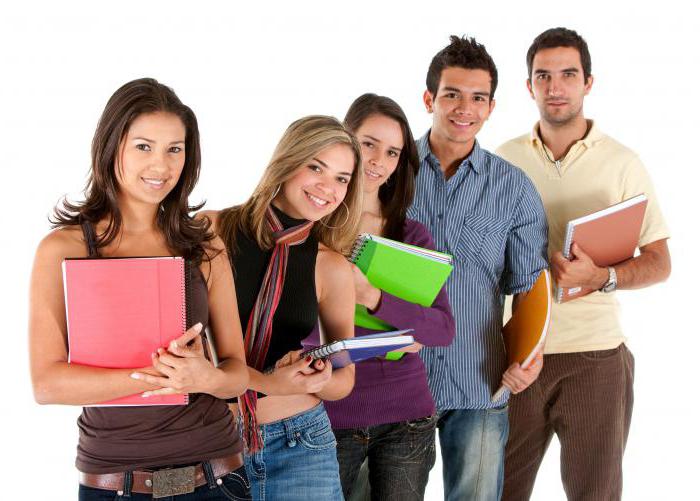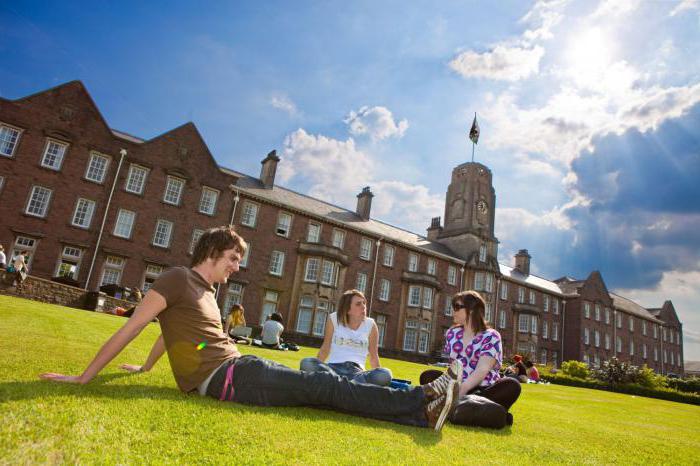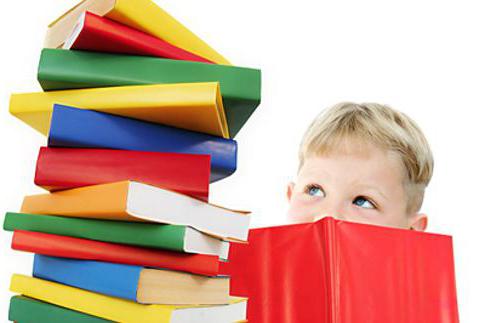Citizens of the Russian Federation have a constitutional right to education. In the country, this area is recognized as a priority, the government pays special attention to it.
The legislation has regulatory legal acts that spell out the types of educational institutions, their structure, and functional responsibilities.
The specifics of education policy
In this area, public policy is based on the following principles:
- Humanization of education. The priority is universal values, the health and life of a modern individual, the free formation of personal qualities, the development of industriousness, civic responsibility, respect for other people, family, homeland, and nature.
- The relationship of educational and cultural federal space. Preference is given to the preservation of national culture and traditions, given the multinational nature of the Russian state.
- Adaptation of the educational process to the level and specifics of the preparation and development of pupils studying.
- Lack of religion in education for municipal and state educational institutions.
- Pluralism and freedom in the OS.
- State-public management option educational process.
Characteristics of modern educational institutions
Article 12 of the Federal Law “On Education” states that educational institutions of various types carry out the learning process with the implementation of one or more types of educational processes, full-fledged upbringing, and development. A public institution is a legal entity, which may have a different legal form: state, municipal, non-state (private, religious, public).
All municipal and state types educational institutions operate on the basis of the basic provisions on OS, which are approved by the Government of the Russian Federation. Non-governmental institutions are not subject to such decrees; they can become for them only models (recommendations).
The establishment of the state status of an educational institution (type, type, category of public institutions) is carried out taking into account the direction of its activities during official state accreditation. Structural subdivisions, branches, branches of an educational institution by proxy may have full or partial powers of a legal entity. It is also allowed for the unit to use its own accounts, an independent balance sheet in credit and banking organizations.
Such types of educational institutions in Russia are created in order to improve and develop the educational and extracurricular process. The law fully regulates the creation procedure, as well as the activities of such MA.
Classification
Types of preschool educational institutions functioning in the territory of the Russian Federation:
- Kindergarten wellness and supervision.
- Institution with a national (ethnocultural) educational component.
- Preschool groups of educational state institutions of the type "kindergarten - school."
- Child Development Centers.
- Pre-gymnasiums in OS.
- Education centers for schoolchildren.
Let us consider in more detail all types of preschool educational institutions.
The specifics of kindergartens
They are the most common institutions for providing pre-school public education. It is assumed that a full-fledged care, supervision, recovery, education, training of children. These are the most popular and affordable types of educational institutions.Types of educational programs may vary depending on the area of activity chosen in kindergarten.
In a similar institution of a combined type, there are several different groups:
- compensating;
- general developmental;
- wellness
These types of educational institutions are in every district center of the Russian Federation, they are designed to educate children from three to seven years.

Characterization of different types of DOW
In the preschool sphere, there are certain types of special educational institutions of a compensating (corrective) nature. Such institutions are visited by children with a variety of pathologies: mental retardation, problems with the musculoskeletal system, with tuberculous intoxication, impaired hearing and vision, impaired intellectual development, and speech defects.
Such types of educational institutions mainly operate around the clock; they are located outside cities. Here, special conditions are created for kids: pools, diet food, massage rooms. Highly qualified teachers, medical workers, psychologists work in the gardens. In order for the child to easily adapt among peers, the occupancy of groups does not exceed 15 people.
In addition to treating babies in such compensatory-type preschool institutions, a training and educational process is carried out, special programs are developed for classes. Special counseling centers created at Kindergarten help parents cope with difficult situations and solve timely problems. In order to get to such an institution, you need to have a pediatrician's referral, as well as certificates of the established form, corresponding to the profile of the kindergarten.
General developmental preschool institutions choose intellectual, physical, aesthetic, and artistic as a priority area of their activity. These types of state educational institutions are attended by kids from three to seven years old.
Wellness and care gardens operate with an emphasis on wellness, preventive, sanitary and hygienic procedures and activities.
If we consider educational institutions of a new type in the preschool environment, we need to highlight gardens with an ethnocultural component. Their main task is the formation in students of respect for different cultures, tolerance for representatives of other nationalities, and respect for family values.
Educators help children learn cultural traditions, reveal the origins of folk rites, beliefs, etc. In the classroom, special attention is paid to respect for the older generation.
Such types of educational institutions as child development centers exist in the system of preschool education. They have special physical education, health, gaming complexes, art studios, computer classes, swimming pools, children's theaters. The use of an integrated approach to the organization of work with preschool children in such centers allows us to comprehensively develop the personality of the child. Particular attention is paid to the artistic, aesthetic and intellectual development of children.
There are new types and types of educational institutions of preschool level, for example, gymnasium.
The main contingent of such institutions are children of primary school and preschool age. The difference is that certain subjects are systematically studied here: the Russian language, mathematics, oral reading, the basics of the English language. Also in the program of pre-gymnasium training there are special aesthetic subjects that allow you to fully develop the personality of the child: rhetoric and rhythm, swimming and outdoor games, drawing and modeling, choreography and music.
Parents choosing pro-gymnasium for their children should first familiarize themselves with the list of items offered.There, classes are held mainly in the form of games, design, research activities. At the age of three to seven years, children get to know the world around them through games. Such preschool institutions allow children to get used to learning, gradually immerse them in the educational environment. There are no problems with discipline, homework, or attending classes at such "little gymnasium students" at school.
The earliest option of preschool education is a day nursery garden. In such an institution, babies from two months old are supervised. There is a special daily routine in the manger, and there are also developing activities. A kid who attends a day nursery should have basic skills appropriate to his age.

School Educational Institutions
In modern Russia, there are different forms, types of educational institutions:
- elementary school;
- primary school;
- full (secondary) school;
- institutions with in-depth study of individual subjects;
- shift (evening) school;
- gymnasium;
- education Center;
- cadet schools;
- ITU (institutions at correctional labor institutions).
Educational institutions for primary school children operate on the basis of a specially designed program. The aim of such institutions is to create optimal conditions for the development of a harmonious personality of students.
Schools are the main types of educational institutions in Russia that strengthen the physical and mental health of children. Elementary are intended for children from three to ten years. In such an educational institution involved teachers, parents (or legal representatives) and the pupils themselves.
Between preschool institutions and the initial stage of education, there is continuity in the physical, artistic, aesthetic, intellectual direction. It is at the very beginning of training that it is important to form curiosity, communicativeness, and cognitive ability in children. For such purposes, federal state standards of the second generation have been introduced. According to them, a graduate of the 4th grade (primary education) must have his own civic position, be a patriot of his country, take care of traditions, nature, family values. Younger students are required to acquire independent thinking skills, to represent the integrity of the picture of the world.
In schools, there is a second level of education - a general nine-year education. There are already other types and types of educational institutions: gymnasiums, lyceums. The former involve in-depth training in one or more subjects. In the Russian Federation, gymnasiums are often interconnected with higher professional education; teachers of academies and universities work in such educational institutions.
Children from the fifth grade are involved in design and research activities, conduct experiments on the basis of research laboratories. In lyceums, in addition to classical educational programs approved by the Ministry of Education of the Russian Federation, additional specialized training is being implemented. Diligence is formed in high school students, respect for the older generation, love for the mother tongue, and the rights and freedoms of the individual are brought up. Graduates of these elite institutions easily adapt in modern society, enter prestigious universities, and quickly find their professional and life paths.
The goal of any state educational institution is the formation of a full-fledged personality on the basis of assimilation of a minimum according to the second generation of GEF. All the main types of educational institutions operating in Russia are free, accessible to citizens of our country aged 7 to 17 years.
If there is a request from the parents, special extended-day groups are opened in schools.Under the supervision of experienced mentors, schoolchildren do homework, attend exhibitions in museums, and dine in the dining room. In addition, with appropriate coordination in the OS, you can open special classes of compensatory training.

General Education Levels
Depending on the level of educational programs selected in the OS, three levels of training are expected:
- general primary education (primary level), designed for 4 years;
- general basic education (second stage) - 5-6 years;
- full (secondary) education - 2 years of study
General primary education is aimed at mastering by students the basics of reading, writing, mastering theoretical thinking, elements of self-control, the basics of hygiene, design and research skills.
It is this stage that is the basis, the foundation for the formation and formation of the individual, social self-determination.
Secondary (complete) education involves the development of creative abilities of students on the basis of an individual and differentiated approach to each child. In addition to compulsory subjects, students themselves have the right to choose elective and optional courses in order to correctly determine their future profession.
Given the needs of parents, at the senior level of education, profile and basic classes can be introduced. Programs used at this stage are created, implemented on the basis of educational state standards second generation. Elective and optional courses are also taught in special programs, approved in the prescribed manner.
In all types of state educational institutions, students use library and information resources free of charge, freely participate in the work of public institutions, attend sports sections, and engage in computer classes.

Replaceable (evening) OS
In such educational institutions, Russian citizens, regardless of age, have the right to receive secondary (general) and basic general education. It is here that the basis for further self-development is created, a conscious choice of a future profession is made, a cultural personality is formed. In such an op amp there are two steps:
- 5 years for general basic education;
- 3 years for general (secondary) education
Boarding school
This type of OS is created primarily to help educate talented and gifted children. Among the principles used in the educational process, the following are distinguished: humanism, democracy, universal values, autonomy, and the secular version of education. Such schools can be of several types: lyceums, gymnasiums, boarding schools. To enroll a child in such an institution, parents (legal representatives) write an application for admission. In exceptional cases, the child becomes a pupil of a boarding school by decision of the municipal authorities, guardianship authorities. In boarding schools created for the development of talented Russian schoolchildren, a certain direction of activity is chosen: physical, musical, intellectual.
Orphanages
For orphans in the Russian Federation, there are such types of OS as orphanages, boarding schools. The main task of such institutions is to create favorable conditions for the mental, physical, emotional development of the personality of the child. The state assumes all material costs associated with food, accommodation, education of orphans and children left without parental care.
Conclusion
In the Russian Federation at the moment there are educational institutions of various types. Despite the serious differences between the educational programs used and the areas of work, all of them are aimed at creating a harmonious personality of the child.








